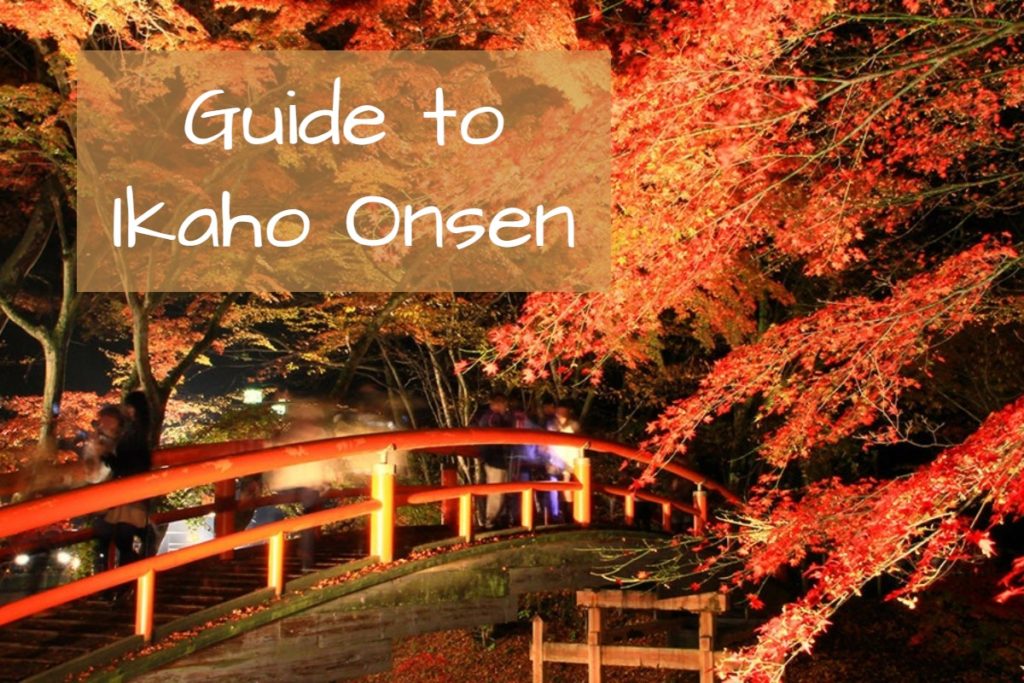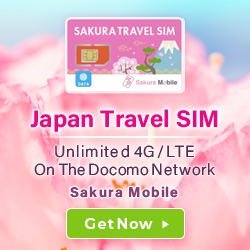Photo courtesy of Oedo Onsen Monogatari Ikaho
Famous for its 300-meter long staircase that runs through the town, Ikaho Onsen is an onsen town that overflows with history.
In this article, we will provide you with a full guide to Ikaho Onsen.
If you are thinking of making a trip, we hope that you will use this article as a reference for sights to see, things to do, and places to stay.
Let’s get started!
Have you booked your SIM card or pocket WiFi for your trip to Japan yet?
In Japan, you’ll want to be connected without missing out on high speed data and internet!
By reserving online before departing, you can
- Lower your rental fees
- Avoid stock shortages at the airport
To learn more about data and WiFi options for your trip, check out our products below.

Hello readers! Sakura Mobile is a SIM & WiFi service provider for international residents and tourists in Japan.
Our global editorial team living in Japan will introduce the charms of the country based on what we have actually experienced and felt.
Table of contents
- What is Ikaho Onsen?
- Enjoying Ikaho Onsen
- Ryokan and hotels at Ikaho Onsen
- Things to do – Nature and cultural spots
- Things to do – Activities
- Food and restaurants in Ikaho Onsen
- A sample travel itinerary
- When to visit Ikaho Onsen
- How to get to Ikaho Onsen
- Ikaho Onsen map
- Things to keep in mind
- Conclusion
1. What is Ikaho Onsen?
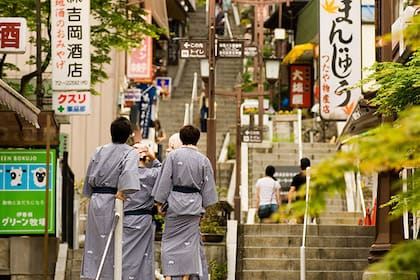
Ikaho Onsen is located in Gunma Prefecture, northwest of Tokyo. Depending on the mode of transportation, you can get to Gunma from Tokyo in as little as 50 minutes. Because of its proximity to the city, Ikaho Onsen is a popular spot for visitors coming from Tokyo.
The Ikaho Onsen town is a small old-fashioned area with traditional restaurants and shops lining the streets. The area’s history goes so far back (most likely to the 15th century) that there are only legends as to how the hot spring was discovered. Those who are in search of a getaway to a town that has a long history and still retains its old-fashioned nature should definitely make a trip to Ikaho Onsen.
Located in the mountains, Ikaho Onsen is one of the representative hot springs of Gunma Prefecture. It is a location rich with nature, making it beautiful year-round.
↑ Go back to the table of contents
2. Enjoying Ikaho Onsen
Enjoy the two unique types of hot spring water
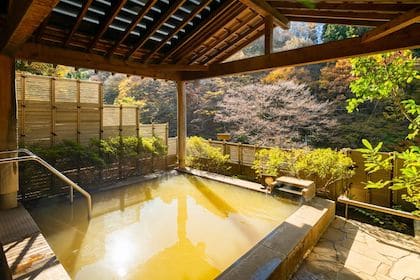
At Ikaho Onsen, there are two rare types of hot spring water for you to enjoy. Going by the names “Kogane no Yu” and “Shirogane no Yu,” they are gold and silver respectively.
Kogane no Yu is originally clear like other waters, but the iron inside causes it to become a rich brown (hence the name “gold”) when it comes into contact with oxygen. Hot springs in general are known for the benefits that they can have on your health; in addition to all the typical effects that are common to other hot springs, Kogane no Yu is said to have healing effects on even medicated ailments, burns, and cuts.
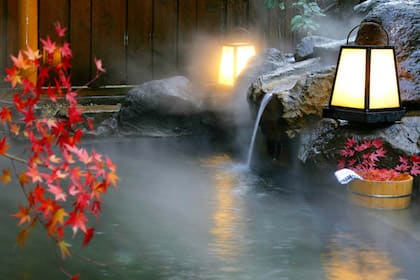
While Kogane no Yu is the historically prevalent hot spring of Ikaho Onsen, Shirogane no Yu is a relatively newer hot spring that has been drawing in visitors to Ikaho throughout recent years. It is popular among women for having natural moisturizing components that help to smooth out and refresh the skin.
Climb the famous stone steps and explore the old-fashioned town
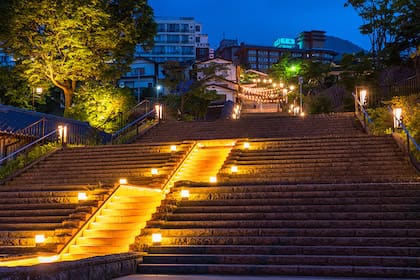
The stone steps that run through the middle of the town have become one of the most prevalent symbols of Ikaho. The first steps were made over 400 years ago and after two rounds of repairs, there are currently a total of 365 steps, a number that represents year-round prosperity. They have become one of the most famous staircases in Japan.
Because there is one step for each day of the year, visitors find it fun to stand on and take pictures on their “birthday step.” Who could have guessed there would be such a unique way to enjoy a staircase?
The town itself retains the classic Japanese townscape with small shops, cafes, Japanese pubs, and old-fashioned restaurants. You can also find vendors selling street food and even shooting games on the street as well.
↑ Go back to the table of contents
3. Ryokan and hotels at Ikaho Onsen
The following are four lodges that we recommend to those thinking about visiting Ikaho Onsen. They each have unique selling points, so make sure to look into each and decide which one best fits your needs.
Hotel Tenbo (ホテル天坊)
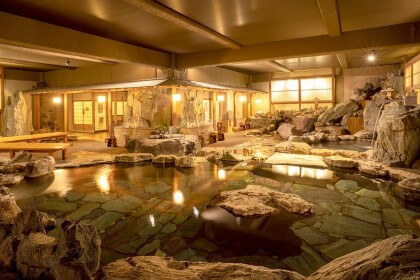
Hotel Tenbo is one of the most popular hotels in the Ikaho area. The hotel itself is very spacious, and those with large families can rent a larger room, even one with a private onsen attached. There are many options for dining as well, so you will be sure to find something you want to eat regardless of whether it is traditional Japanese or more westernized food.
The hot springs have received especially high praise for being a spacious and beautiful area. The public baths are constructed using natural rocks and you can experience both the special types of hot spring water at Ikaho Onsen, “Kogane no Yu” and “Shirogane no Yu.”
Information
- Price: Starting around 12,000 JPY per person/night
- Address: 396-20 Ikahomachi Ikaho, Shibukawa, Gunma 377-0196 (Google MAP)
- # of Rooms: 183
- Large Public Bath: Available
- Private Rental Bath: Available
- Visit Official Site
Kishigon Ryokan (岸権旅館)
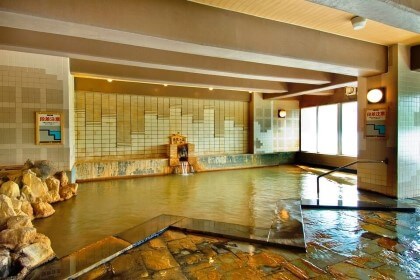
Kishigon Ryokan is a ryokan that was designed with the Taisho Period of Japan (1912 – 1926) in mind, making for a mainly Japanese-style interior. Aside from the decorations, the food is inspired by that time period, giving you a taste of the local ingredients arranged in a traditional style. You can find a clean modern touch to the guest suites as well. There is a large public bathing area and also a private rentable onsen for those who are not comfortable with the public bath.
Aside from just the nice rooms and relaxing onsen, you can have fun in the ryokan with ping pong tables, a lounge, a karaoke room, and a library. Those visiting will have fun just spending time on the premises.
Information
- Price: Starting around 14,000 JPY per person/night
- Address: 48 Ikahomachi Ikaho, Shibukawa, Gunma 377-0102 (Google MAP)
- # of Rooms: 70
- Large Public Bath: Available
- Private Rental Bath: Available
- Visit Official Site
Ikaho Kounkan (伊香保温泉 香雲館)
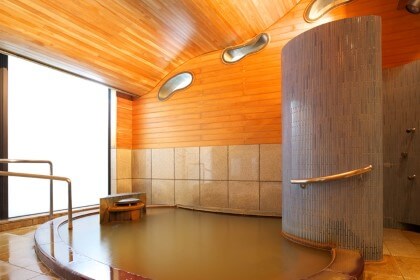
Ikaho Kounkan is a luxury ryokan that emphasizes the importance of a quiet getaway from a busy life filled with daily stressors. There are only 10 rooms available at this ryokan (all very spacious), each with its own private onsen attached. Although there is a public bath available as well, many guests stick to using the private bath in their room for convenience and privacy.
The food at Ikaho Kounkan is also very traditional Japanese, featuring lots of seafood and fresh vegetables. You may get to try a variety of different dishes depending on the time of year that you visit.
Information
- Price: Starting around 25,000 JPY per person/night
- Address: 175 Ikahomachi Ikaho, Shibukawa, Gunma 377-0102 (Google MAP)
- # of Rooms: 10
- Large Public Bath: Available
- Private Rental Bath: Available
- Visit Official Site
Hotel Matsumotoro (ホテル松本楼)
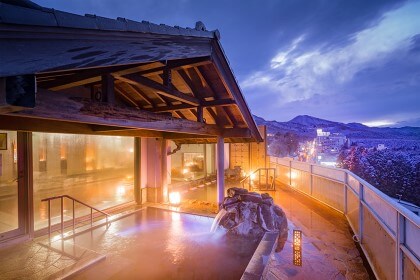
At Hotel Matsumotoro, you can experience both the famous hot spring waters at Ikaho Onsen. The outdoor bath on the top floor of the building has a great view of the mountains. Unlike the inner city areas, places further out into the countryside like Ikaho have nice views of the stars at night, so we recommend taking a bath when the stars are out.
The interior of Hotel Matsumotoro, including the guest suites and lounge area have a modern feel to them. However, you can still experience the Japanese ryokan experience by renting yukata (traditional Japanese clothing) to wear inside and when walking through the onsen town.
Information
- Price: Starting around 15,000 JPY per person/night
- Address: 164 Ikahomachi Ikaho, Shibukawa, Gunma 377-0102 (Google MAP)
- # of Rooms: 51
- Large Public Bath: Available
- Private Rental Bath: Available
- Visit Official Site
↑ Go back to the table of contents
4. Things to do – Nature and cultural spots
The nature at Ikaho Onsen is more than just pretty scenery. Among the forests and mountains, there are many spots to explore that have a deep history. In this section, we introduce some of the places that we believe are some of the best to experience Japanese culture in Ikaho.
Ikaho Shrine
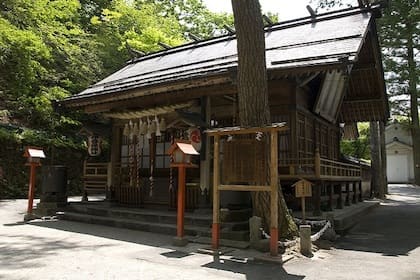
Although maybe not as large or extravagant as some other tourist-heavy shrines, Ikaho Shrine has a long and rich history. It was founded in the year 825 and has become one of the symbols of Ikaho Onsen. It is located at the top of the famous stone steps, so you will reach it if you are planning on climbing the stairs.
Because many famous shrines close to the city tend to be crowded, we think that Ikaho Shrine would make a good visit for travelers who want to spend a little more time observing the old Japanese architecture and buying souvenirs. If you are interested in the history and culture of Ikaho Onsen, we recommend you stop by and explore Ikaho Shrine.
Bukkosan Hosuiji Temple
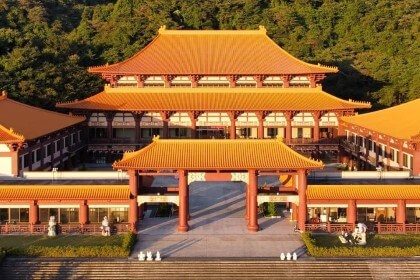
Bukkosan Hosuiji Temple should undoubtedly be on your travel itinerary if you are interested in Buddhism. Located about a 10-minute car ride from the main town area, Bukkosan Hosuiji Temple has a history dating back thousands of years and multiple branches worldwide in countries like China, Malaysia, Australia, and The United States.
The temple grounds are extensive, with even an art museum and a cafe on the premises so just exploring the temple grounds can make for a good time. However, you might also consider trying out some of the hands-on experiences like zen classes or “shakyou” which is copying sutra with a brush and ink.
These kinds of classes are an experience that you will not be able to find at many other places, so we recommend taking advantage of them. It is not every day that you can get so close to Buddist traditions in an ancient Buddhist temple.
Kajika Bridge
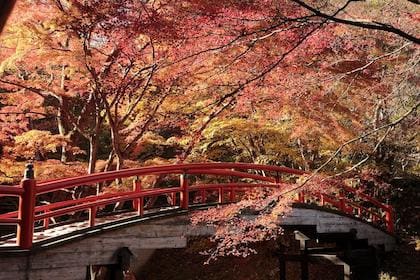
One of the more well-known sight-seeing spots of Ikaho, Kajika Bridge is a red bridge located among the forest in the area south of the Ikaho Onsen town. Most people visit during the fall (any time from the end of October to mid-November) for the chance to see the red and orange leaves. At night, lights are turned on that illuminate the trees, making for a great photo opportunity.
Because most tourists go to Kajika Bridge around the end of the year you may assume it is not worth making the trip outside of the prime season. However, mid-May to mid-June is also a time of year in which the leaves on the trees are bright green, so Kajika Bridge is well worth the visit during the early summer as well.
Did you know? Ikaho Onsen and Spirited Away
Ikaho Onsen has been said to be one of the reference areas for Hayao Miyazaki’s famous animated movie, “Spirited Away.”
Kajika Bridge is said to be the reference for the main red bridge that is depicted in the film. There are a few other spots that inspired scenes in the film such as a ryokan called “Yokotekan” and the famous stone steps.
Those who are a fan of Ghibli movies might consider checking all of these locations out.
↑ Go back to the table of contents
5. Things to do – Activities
Many of the activities that you can enjoy in the Ikaho area will bring you out into nature. The following are some of our recommended activities for travelers who are looking to get outside and move around.
Berry picking
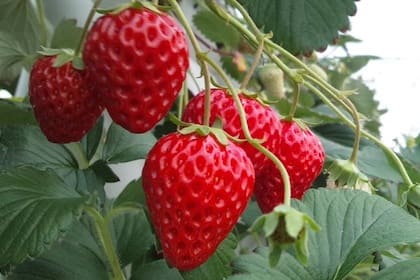
The abundance of nature in Ikaho allows for a steady crop of fruits and vegetables. Many families and groups of friends who visit Ikaho will enjoy berry picking.
Note that different fruits are available all year. From the beginning of January to May you can pick ripe strawberries, from the end of June to the beginning of August fresh blueberries, and fresh apples from the beginning of September to the beginning of December. We recommend checking out the Ikaho tourism website to look for local-recommended berry farms.
Ikaho Ropeway
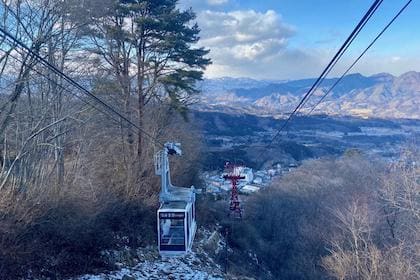
The Ikaho Ropeway is a cable car that runs between two stations and travels 995 meters up a mountain. It has served travelers to Ikaho since 1962, bringing them up to an area with an observation deck and Ikaho Rink, which is mentioned in detail later in this article. If you are one for nature walks, there is a large park to visit when you get to the top of the ropeway that has multiple trails for hiking.
If you are interested in riding the ropeway, you will be looking at paying 830 JPY per person for a round trip (410 JPY for elementary schoolers and younger).
Ikaho Green Bokujo
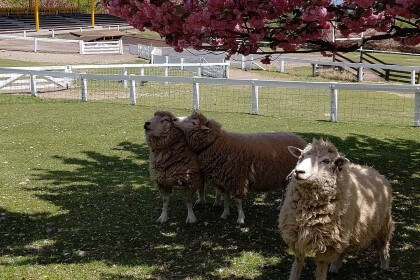
Especially popular among animal-loving small children, Ikaho Green Bokujo is a ranch located a 15-minute bus ride from JR Shibukawa Station.
There are many types of animals such as goats, sheep, horses, rabbits, and dogs that you can observe and even touch. If you are interested in something more hands-on, you can experience making hand-made butter or ice cream.
These classes can be a fun family activity, making Ikaho Green Bokujo a perfect spot for those traveling with children. This is only the tip of the iceberg when it comes to the things to do at Ikaho Green Bokujo, and you could realistically spend an entire day at the ranch.
Information
- Price: 1,300 JPY/person
- Hours of Operation: 9:00 am – 4:00 pm
- Visit Official Site
Ikaho Rink
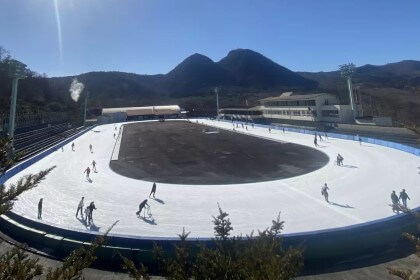
Ikaho Rink is the largest ice skating facility in Japan and is even well-known on a worldwide scale. Speed skating competitions and ice hockey games are held often. There are three different rinks, one of which is an outdoor loop 400 meters long. An outdoor ice skating rink of this size is hard to find, so we recommend that you check this out if you are visiting Ikaho during the right season. Ice skating here can be a fun activity to do with friends or family.
Note that Ikaho Rink is only available from the beginning of September to the end of March. There may also be days of the week (usually weekends) where Ikaho Rink hosts competitions and as a result, will not be open to the public.
Information
- Price: 1,150 JPY/person (620 JPY for children)
- Hours of Operation: 9:00 am – 5:00 pm (Closed on Mondays and the New Year)
- Visit Official Site
Have you booked your SIM card or pocket WiFi for your trip to Japan yet?
In Japan, you’ll want to be connected without missing out on high speed data and internet!
By reserving online before departing, you can
- Lower your rental fees
- Avoid stock shortages at the airport
To learn more about data and WiFi options for your trip, check out our products below.
↑ Go back to the table of contents
6. Food and restaurants in Ikaho Onsen
There are foods specific to Ikaho Onsen. In this section, we will introduce three types of food that you should be sure to try when you visit and where to get them.
Mizusawa Udon
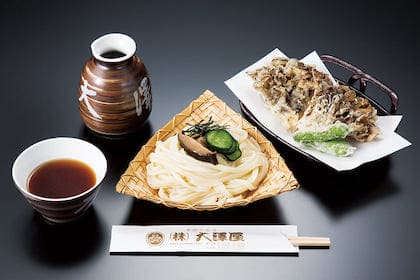
Three types of udon are known as the “big three” of Japan, and Mizusawa udon is one of them. The noodles are on the thin side and are often served cold. Depending on the shop, you may be able to get variations that include soy sauce-based sauce or a sesame-based sauce.
It is said that these noodles were served to the visitors of Mizusawa Temple, located about 4 kilometers away from Ikaho Onsen. Even today, there is a street close to the temple that has 13 shops specializing in Mizusawa udon.
Because Mizusawa Temple is a bit out of the way, we have included information below for Osawaya, which has a shop located close to the stone steps, easier to access for those staying closer to the onsen.
Information
- Name: Osawaya (大澤屋)
- Price: 700 JPY – 2,310 JPY
- Hours of Operation: 10:30 am – 3:00 pm (Open for an extra 30 minutes on the weekends, closed on Thursdays)
- Visit Official Site
Yunohana Manju
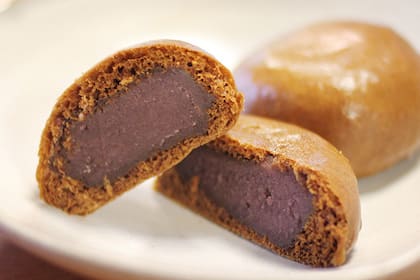
“Manju” are small steamed buns that have red bean paste on the inside. They are common Japanese sweets, and you can find them at traditional Japanese sweet shops or in tourist-heavy areas.
Yunohana Manju is a type of “onsen manju,” which refers to manju that are sold in onsen towns. Ikaho Onsen is actually said to be the birthplace of onsen manju and that the brown color comes from the color of the hot spring water. The outer layer of the buns actually uses onsen water in it, so we recommend you try it out as it may taste different from your average manju.
Information
- Name: seihoutei (清芳亭)
- Price: Starting at around 1,000 JPY
- Hours of Operation: 8:00 am – 5:00 pm
- Visit Official Site
Tama Konyaku
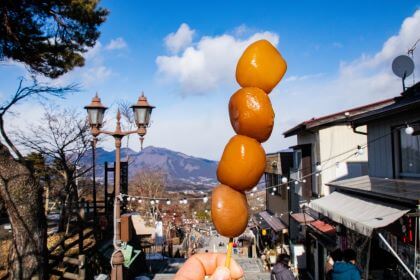
While not a food that is necessarily specific to Ikaho, Tama Konyaku is a Japanese street food that is hard to find elsewhere. Its small size and easy-to-eat shape make it a good snack for those making their way up the stone steps. The most famous shop is located on the 94th step.
Although it might resemble Japanese sweets that you have seen before, Tama Konyaku is cooked in soy sauce so it is savory. It is also recommended to put spices onto it when you eat.
Information
- Name: Ishidan Tama Konyaku (石段玉こんにゃく)
- Price: 100 JPY
- Hours of Operation: 9:00 am – 6:00 pm
↑ Go back to the table of contents
7. A sample travel itinerary
The following is an example of the activities you could do during an overnight (two-day) trip to Ikaho Onsen from Tokyo (if you are coming from further away, it would be wise to stay a little longer based on travel time).
(Day 1)
9:30~
- Depart from Tokyo by train
11:00~
- Arrive at Ikaho Onsen
- Leave your luggage at your ryokan and head into town
- Try some of the smaller local street foods like Tama Konyaku and Yunohana Manju
14:00~
- Take the time to explore the nature areas (shrines, parks, etc.)
18:00~
- Check in to the ryokan
- Depending on your meal plan, eat dinner at your lodge
- If there are no meals included, try out some of the local restaurants
20:00~
- Use the public bath
- Hang out in your hotel room and head to bed
(Day 2)
9:00~
- Eat breakfast at the ryokan (or out depending on your plan), check out
- Leave your luggage at the ryokan in order to have your hands free to do things
- Visit Ikaho Green Bokujo
13:00~
- Have lunch (maybe get some Mizusawa Udon)
14:00~
- Ride the Ikaho ropeway
- Go ice skating at Ikaho Rink
17:00~
- Visit one of the recommended nature spots before it gets too dark
19:00~
- Head back in the direction of the station and eat dinner at one of the local restaurants
20:00~
- Grab your luggage and head back to Tokyo
↑ Go back to the table of contents
8. When to visit Ikaho Onsen
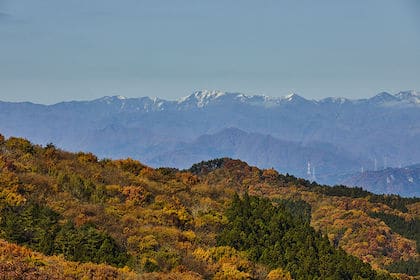
Ikaho can be a beautiful location to visit at all times of the year. As mentioned earlier in this article, one of the activities to participate in at Ikaho is fruit picking so you can enjoy different fruits depending on the time of year you decide to visit.
Most people visit Ikaho Onsen in the fall because of the Japanese tradition of viewing the scenery of the yellow, red, and orange leaves called “kouyou” (紅葉). However, Ikaho is beautiful at all times of the year. No matter the season, there will be activities to participate in.
In the spring, vibrant azaleas bloom in the area, in summer you can visit the parks and enjoy the green, in the fall the leaves are bright shades of red and orange, and in the winter you can go ice skating. We also recommend you experience Ikaho Festival during the late summer if you are in the area. It is a very traditional Japanese festival and fits quite well with the old-fashioned backdrop of Ikaho Onsen town.
↑ Go back to the table of contents
9. How to get to Ikaho Onsen
Traveling from Tokyo
Despite Tokyo being relatively close to Ikaho, there are multiple ways that you could go about getting there. If you are looking for the fastest option, we recommend taking the bullet train from Tokyo Station and then transferring to a local train at Takasaki Station to ride until Shibukawa Station. It will take you about an hour and a half; however, this is also the most expensive option at 4,820 JPY one way.
You can also take the local trains all the way up to Shibukawa Station; it will cost you 2,350 JPY one way and takes about 3 and a half hours, considerably longer than the bullet train.
Alternatively, there is a bus that runs from Shinjuku Station to Shibukawa Station for about the same price. The journey is about 2 and a half hours and is recommended for those who are not as familiar or are worried about figuring out the trains.
The closest train station to Ikaho Onsen is Shibukawa Station; however, this is still quite far from the onsen town, so you will have to take a 25-minute bus ride to get there.
Traveling from Kyoto or Osaka
Ikaho Onsen is quite a ways from the western side of Japan, but it is not impossible to visit. By using a combination of the bullet train and a bus from Takasaki Station, you can get to Ikaho Onsen in about 3 and a half hours. It will cost you about 18,000 JPY.
If you do not mind a long journey for a low price, you can take the overnight bus for about 10,000 JPY. It will take you 8 hours to get to Takasaki Station, and from there you will have to transfer to a local train to get to Shibukawa Station.
As mentioned above, you will need to take a bus from Shibukawa Station to Ikaho Onsen.
↑ Go back to the table of contents
10. Ikaho Onsen map
On the map below, you can see all the places that were brought up in this article. From places to stay to landmarks to visit, we hope that you will check out some of these locations in Ikaho.
↑ Go back to the table of contents
11. Things to keep in mind
Be aware of the tourist season
One thing to keep in mind is that Ikaho Onsen is one of the most popular onsen spots for those living in and around Tokyo because of its close proximity. During peak travel season it can get fairly crowded and as a result, prices for hotels may increase. In general, you can expect to see more people in the streets during this time as well.
Tattoos
Note that although the ideals and regulations are shifting in Japan, there are still many places that do not allow those with tattoos to enter hot springs. If you have tattoos, you should take special care in searching for a tattoo-friendly lodge. Especially if you have tattoos that stand out, it would be wise to reserve a room with a private onsen so that you can get the most out of your experience in Ikaho.
Keeping cash on hand
We also recommend that you make sure to have plenty of cash with you when you make the trip to Ikaho. Because Ikaho is definitely not a big metropolis, many old-fashioned restaurants and shops do not take cards or other digital payment methods. We suggest getting your hands on cash before leaving for Ikaho so you will not have to worry about it once you arrive.
Make use of tourist information centers
There are multiple tourist information centers in Ikaho. You can stop by and pick up some pamphlets or talk to the people that work there if you get lost or need more ideas about how to spend your time. You will find that many sightseeing pamphlets are translated into English.
↑ Go back to the table of contents
12. Conclusion
We hope that by reading this article you feel more informed about Ikaho Onsen.
Close to Tokyo, Ikaho Onsen makes the perfect getaway spot for those who need a break from the city. Centuries of history can be felt just by walking through the town or trying some of the local food.
For first-time onsen visitors, Ikaho is recommended because of its proximity to Tokyo and the number of other activities that you can enjoy aside from the hot springs.
Good luck and have fun on your trip!
Have you booked your SIM card or pocket WiFi for your trip to Japan yet?
In Japan, you’ll want to be connected without missing out on high speed data and internet!
By reserving online before departing, you can
- Lower your rental fees
- Avoid stock shortages at the airport
To learn more about data and WiFi options for your trip, check out our products below.

